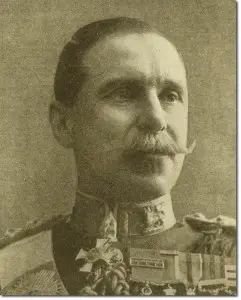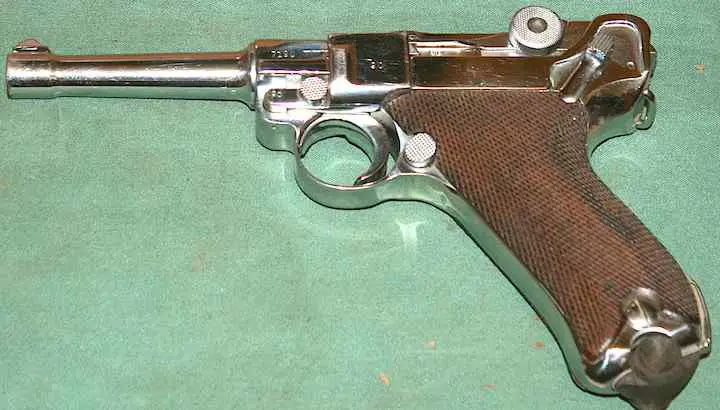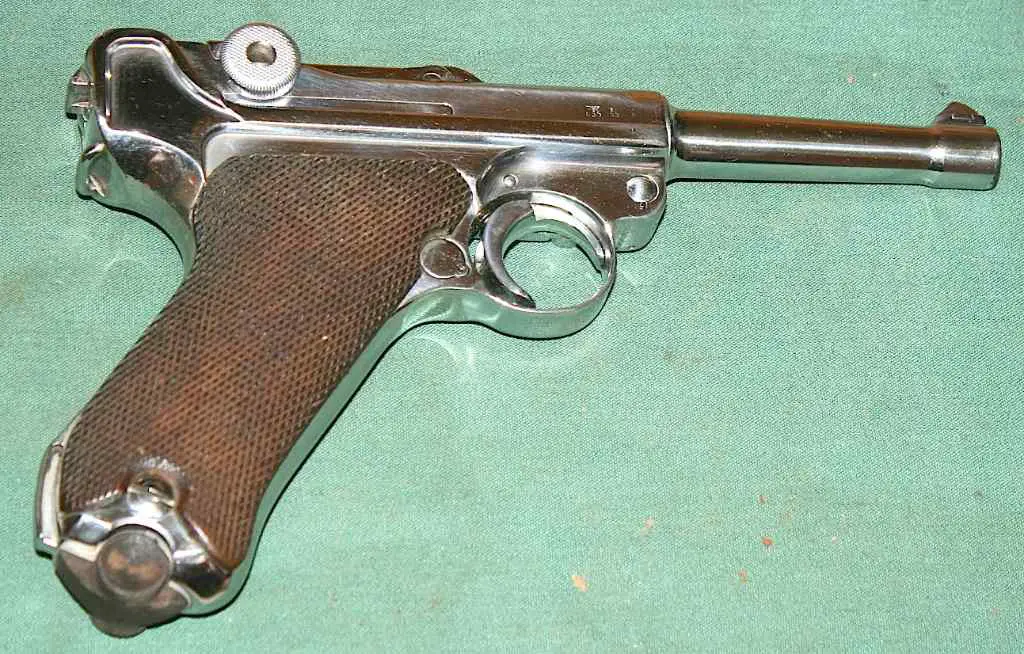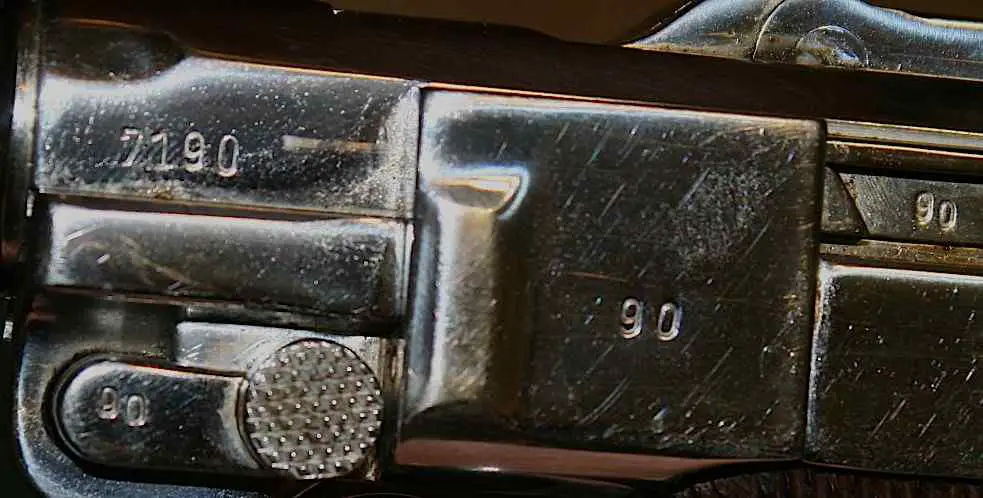 Nope, they keep ignoring them afterward. As a result, the LA County Morgue has dozens of dead vets in its drawers, who have no families to take care of them, but have depended on volunteers for their last services, and the VA for their cemetery plots and headstones.
Nope, they keep ignoring them afterward. As a result, the LA County Morgue has dozens of dead vets in its drawers, who have no families to take care of them, but have depended on volunteers for their last services, and the VA for their cemetery plots and headstones.
Guess who hasn’t been holding up their end of the log? The morgue wrote to the VA, according to CBS:
[T]here are about 60 decedents of probable veteran status that have awaited disposition for about a year as a result of a personnel change in the Veterans Affairs office and stringent identification/eligibility processes required by the VA.
The VA deployed one of its army of six-figure-plus-pay, plus-lavish-benefits, PR dollies to ask the public and the morgue, “Who are you gonna believe, me or your lyin’ eyes?”
Cindy Van Bibber, a VA spokesperson said, “There’s personnel changes every day but that certainly doesn’t take away from the service that we provide any veteran.”
She says “at no point” did the City Morgue contact the VA and tell them about the bodies piling up there.
“We definitely weren’t contacted or we would have had a service for the veteran,” she added.
Van Bibber said the process to get a proper burial should take about three days, not a year and a half.
It should, shouldn’t it? There’s something on which we can agree with PA Dolly, Cindy Van Fibber. But funny thing, it has taken a year and a half. Or more. And 28 of the 60 abandoned vets were still in the drawers at press time. And the letter to the VA is in the LA County Morgue files, even if the VA’s crackerjack paper pushers can’t find their copy.
It was a brave attempt at, “These are not the stiffs you are looking for,” but The Force is pretty feeble with this particular payroll patriot.
Is it firing time yet?
Eli Whitney and Interchangeable Parts

Whitneyville, CT, and the Eli Whitney Armory on the Mill River, c. 1825, by William Giles Munson, 1827. Source: Eli Whitney Museum.
The clothes you’re wearing at this moment are made of fiber. Since the mid-20th century, man-made fibers have become extremely commonplace in textile manufacture. But in all the previous centuries and millennia of civilization, the only possible source for fibers was nature. Natures bounty in providing these fibers is not remarkably varied: the four fibers that are generally made into clothing have been cotton, silk, wool and flax. Silk and wool are animal products. Cotton and flax are grown in the fields.
 Of these, the last to be economically manufactured was cotton. The nub of the problem is that the desirable fibers are attached to seeds; in nature, they help the seeds spread on the wind. Removing the seeds from the fibers (or vice-versa) was a difficult manual job, uneconomical for even a slaveholding economy. A Massachusetts man and Yale graduate named Eli Whitney invented a machine that solved this problem, just as industry needed it. That’s what the cotton gin (short for “engine”) did: combed the seeds out of the fibers so the fibers could be spun into threads, then woven into cloth, all of that depending on other machines invented by other New England Yankees (and old-England mechanics, too).
Of these, the last to be economically manufactured was cotton. The nub of the problem is that the desirable fibers are attached to seeds; in nature, they help the seeds spread on the wind. Removing the seeds from the fibers (or vice-versa) was a difficult manual job, uneconomical for even a slaveholding economy. A Massachusetts man and Yale graduate named Eli Whitney invented a machine that solved this problem, just as industry needed it. That’s what the cotton gin (short for “engine”) did: combed the seeds out of the fibers so the fibers could be spun into threads, then woven into cloth, all of that depending on other machines invented by other New England Yankees (and old-England mechanics, too).
A staccato drumbeat of new inventions in the late 18th Century increased the throughput of textile operations over a thousandfold in 20 years, producing industrialist millionaires overnight across the British Midlands, while exhausting existing cotton supplies from India, and giving the dying institution of slavery a new economic boost in the southern States. The efficiency of this novel textile industry was so great that a British merchant in India could ship the raw cotton from Calcutta and receive back finished cloth that he could sell for less than local mills could produce it. It made Whitney rich, but not as rich as it might have done, as intellectual property protections were weak at the time, and his cotton gin was widely copied.
Whitney was born in central Massachusetts, in the then-unincorporated town which became Westborough in 1717. His birth house was long gone, but his family’s barn stood, in bad repair, until a vandal burned it down in the 1970s. But he did not stay in central Massachusetts and would be associated most of his life with the Connecticut River Valley and especially the State of Connecticut. The Connecticut River and its tributaries were larger and had more drop than the smaller rivers further east, making them ideal for powering machinery.
Whitney turned to another field of invention, one that was the lifeblood of the Valley: gun manufacturing. He knew that placing gun manufacturing on an industrial footing would require specialization, and the only way to do that would be to have parts so standardized that they would interchange without handwork or fitting. This required several enabling technologies to have reached maturity, such as measuring tools, manufacturing parts with tools and dies rather than forging them by hand, and manufacturing to understood, and drawn-to-scale, tolerances.
The explanation is well laid by Whitney’s son, Eli, Jr., in an 1890 letter to the author of a monograph on the cotton gin:
His invention of methods for making practical and successful his system of making the parts of arms, and any-other article, often repeated in manufacture, is of the utmost importance to mankind, and is undoubtedly the foundation of the mechanical prosperity of the United States, and the superiority of American manufactures over those of any other country.
I refer to his uniformity system—or making the similar parts of an arm or machine so near alike in shape that they can be used in assembling the piece without working. In 1798, when he proposed to make arms with parts interchangeable, the French and English ordnance departments laughed at the idea as an absurdity, saying that each arm would be a model, etc., and would cost $100; but he soon proved the advantages of his inventions, so that the United States government adopted his system in all the armories under its control.
In 1798, there were very few skilled mechanics in the United States, and this uniformity system enabled the manufacturers to employ unskilled mechanics to great advantage. In1856, the British government, and in 1871 and 1872, the Russian, German, French and Italian governments adopted the uniformity system of m^aking arms, invented by Kli Whitney in 1797-98. It has been worth many millions to the United States and the world, but he received a very trifling compensation, scarcely worth mentioning, and that indirectly. At the present time, guns, clocks, watches, sewing machines, and almost every article of wood or metal which is often repeated, is made on the plan of his uniformity system, and it would be a loss of many millions every year for the manufacturers of the United States to go back to the old European system of manufacture.
Whitney did not patent any aspect of his interchangeable parts work, which goes back to his difficulties with the cotton gin. His working model of the machine was stolen, and broadly duplicated; and he found that his patent, for all the pride in brought him, was practically unenforceable. So he chose trade-secret protections instead.
Whitney saw clearly what exactly was difficult about firearms manufacturing to an interchangeable standard:
A good musket is a complicated engine and difficult to make — difficult of execution because the conformation of most of its parts correspond with no regular geometrical figure.
A “stand of arms” was the flintlock-era term for a musket and its accessories (ramrod and bayonet). The accessories had traditionally been hand-fitted to the gun, too: as strange as it sounds to a modern soldier, if you and the fellow in the next rank inadvertently swapped bayonets, you might both be left unable to fix them. When Whitney got a contract for 10,000 stands of arms, with interchangeable parts, in 1798, he had to start by building his factory.
The conversion of metals into ramrods, bayonets, barrels, locks, and “mountings” took place, broadly speaking, in two stages: the first shaping required heat and the second required cutting tools. Except for the barrels, these two processes at the Whitney Armory took place in buildings on opposite sides of the Mill River. On the east bank were the forge fires for the shaping of parts; on the west bank were the machines and tools for the cutting of parts. It is probable that the welding, grinding, and boring of the barrels all took place on the west bank, although the evidence on this point so far is inconclusive, after which they were test-fired in a proof house on the east bank. In Eli Whitney Jr’s day, the heat-treating operations of case-hardening and annealing also took place on the east bank and a foundry was added to the complex of buildings there, to allow shaping by casting as well as by forging. Conversion of hardwood into shaped and “inletted” gunstocks and of softwood into shipping crates took place on the west bank, as did the assembly of the parts and packing of completed weapons.
This comment, from the Whitney Museum site, is admittedly partly speculative; the historians at the Museum admit that there is scant information about the layout and day-to-day operations of the Armory, and that most of what we know about Federal period firearms production comes from the archives of Springfield Armory, where ordnance officers obsessively recorded and filed information that, if it existed at private plants like Remington’s, Waters’s and Whitney’s, was treated as ephemeral and not saved after the plant was reorganized. Whitney’s plant underwent many changes in its ninety years of arms making. The Whitney scholars warn about giving too much credence to inferences drawn from records at the the more-systematized Springfield, but note that:
In 1825… 195 separate operations in musket production were listed in a report about Springfield Armory, and were identified as performed by hand or by waterpower. The number of operations per part ranged from three for the sear to 24 for the barrel. Among them were, for instance, five for the trigger: forging by hand, trimming by water, filing by hand, polishing by water, and hardening by hand. At the Whitney Armory, as we currently understand the site, if a trigger went through the same sequence, it would be forged in the east bank forge shop, then taken to the west bank machine and filing shop for trimming, filing and polishing, and returned to the east bank for hardening before finally joining other parts of the “mounting” in the stocking shop on the west bank. Each of the other 29 musket parts mentioned in the list would follow its own sequence of journeys back and forth across the Mill River for shaping, cutting, and heat treating. Although this seems an inefficient arrangement by modern standards of industrial engineering, it was a far less awkward situation than the one at Springfield, in which the water-powered operations were a mile away from the hill-top location of the manual operations. Eli Whitney had initially acquainted himself with this difficulty at Springfield before deciding to locate all of his musket production at the mill site instead of using his cotton gin shop on Wooster Street, two miles away, for hand operations.
Whitney’s guns still had a lot of hand work in them. In general, parts that could be turned and screw slots on early Whitney muskets show machine tool work, and flat and irregular parts show hand filing. His key innovation may have been organizing the work by type of work rather than by type of gun part. Workers seem to have been specialized, also: if you were a filer, you were likely to be a filer of lock plates, or of triggers, rather than a generalist. And these filers were paid, apparently, piecework rates.
Some machine tool historians also credit Whitney with the design of the first practical milling machine. While claims of primacy are always hotly disputed, it seems indisputable that he did build and employ such a machine in Whitneyville near the end of his life.
Whitney had several descendants who worked in the firearms industry, and who jealously guarded their famous ancestor’s reputation, which makes sorting out man from myth at this two centuries’ remove fraught with complexity.
Other New England makers, such as Asa Waters and Thomas Blanchard of Millbury, Mass., and Simeon North of Berlin, Conn., were also working on interchangeable parts and repeatable machinery at the same time. Blanchard’s stock “lathe” would be adopted practically universally by gunmakers; North would introduce his system to the national armory at Harper’s Ferry. And while the system of interchangeable parts with sizes confirmed by jigs and gages would come to be called the American System, French ordnance officers including Honoré Blanc had already tried to apply similar concepts to the manufacture of cannons and muskets. (As is commonly the case, intelligent men see a similar need at a similar time, quite independently, but Jefferson knew of Blanc’s experiments and promoted the US contract to Whitney, so the Frenchman may truly have primacy).
Now, during the life of Eli Whitney (up to 1825) there was a limit to what this “interchangeability” meant. A hammer from one of Waters’s muskets might interchange with another Waters musket, but a Whitney musket, which might have been made to the same specifications from the War Department, would have parts that would interchange only with other Whitney muskets. To make truly interchangeable parts, that would be a future step, one achieved in Springfield, Whitneyville, and other facilities by the late 1840s. And it comes at a price: hand-fitted parts often have very tight clearances that ensure repeatability and accuracy. Machine finished parts are often finished to somewhat more open tolerances, trading some “perfection” in the individual weapon for the undeniable benefit of easy parts replacement and repair (and, perhaps, reduced skills required for assembly workers).
By the US Civil War, American muskets and rifle-muskets were made of fully interchangeable parts, as were French and English arms, and other nations were working to the same goal.
So Whitney’s interchangeability was but a baby step. But we can see the ancestry of today’s highly modular ARs, not to mention today’s international-partsbin-mongrel AKs, in the late-18th-Century efforts of Eli Whitney to build a couple dozen muskets that could be disassembled and reassembled after the parts were jumbled. It was taken as gospel at the time that every part of every gun required hand fitting by a gunsmith.
Eli Whitney, then, was a key figure in the transition of gunmaking from hand artisanship to mass production. And one of the delightful and cool things about the gun culture is that he didn’t eliminate hand artisanship; competition from mass-produced guns forced artisans to either raise their quality above that obtaining in the factory product, or to reinvent themselves as designers of guns for production (as John M. Browning, whose father had been an old-style handcraft gunsmith, did).
Poly-Ticks: The Real Face of Crime in Massachusetts
Now, some are critical of our “insinuation that Speaker DeLeo is somehow involved with the Mafia,” and we’ve taking some abuse for “going there on an Italian-American, which is racist.” To which we counter as follows:
- George Takei might have had Charlie in his own strike force, but we got Sicilians in our own family. So we should get the Chris Rock exemption for bagging on Guidos here.
- Last time we checked, Italian was not a race. The biological term “race” hinges on some degree of genetic distinction.
- Our understanding is that when DeLeo meets made guys, they introduce him as “a friend of mine” and not “a friend of ours.” It’s unlikely an organization with the traditions of LCN would “make” someone in such a disreputable profession, after all.
But even if you take DeLeo at his word, and believe that he’s really trying to reduce crime with the latest inane gun bill from the only New England state with rising violent crime levels, another news story catches our attention. This one illustrates what’s been happening when the pols have been obsessing and stressing about the guns held by folks other than DeLeo’s criminal associates. The Boston Herald’s editorial page:
With his guilty plea yesterday to a charge of first-degree murder in the stabbing death of his girlfriend the despicable Jared Remy will soon disappear from public view and for that we should all count our blessings.
But taken together Remy’s sickening crime and his history of kid-glove treatment by the courts exposed flaws in the state’s criminal justice system, awareness of which must not be allowed to disappear along with him.
Jared Remy illustrates the key fact about Massachusetts: it is a government of men, not of laws. One’s class and connections — Remy is the pampered son of a wealthy and beloved former Red Sox 2nd baseman, and current color commentator — is more important to his treatment in the courts than what he does, in a fairly direct repudiation of American (and small-r republican, for that matter) values and a reversion to the ancient Hammurabic principle of “different spanks for different ranks.”
If a nobleman put out the eye of another nobleman, his eye shall be put out. If he break another nobleman’s bone, his bone shall be broken.
If he put out the eye of a commoner, or break the bone of a commoner, he shall pay one [silver] mina.
If he put out the eye of a man’s slave, or break the bone of a man’s slave, he shall pay one-half of its value.
This is not Massachusetts law as codified, and that’s what is the break with Hammurabi; but it is Massachusetts law as practiced.
Remy, in fact, is a career violent criminal who has been in and out (mostly, as we’ll see, out) of the courts over 20 times, for assaulting, beating or otherwise injuring at least five women and one man over the years, each one more seriously than the last, and because of his connections, his famous dad, the hero-worship of Red Sox fans, you name it, he’s been given a free ride every time — and the helpless women have been abandoned by the system. He also led a gang that beat a 15-year-old-boy brain-damaged in 1997. The boy died seven years later. Because of his father’s celebrity, Jared Remy was never charged in the violent assault.
He was given a job at Fenway Park (as corruption-sated Bay Staters joke, “after a nationwide search”), which he didn’t lose for stealing a box of World Series jackets in 2007, but did lose in 2009 for dealing steroids at the Park. And he never saw a cell over that one, either, because Do You Know Who I Am.
He has a brother and a sister who are also worthless oxygen thieves, too. The brother, Jordan, admitted stalking and indecently assaulting a woman in 2010 after she resisted his advances in a bar in 2010, and his case was broomed. The daughter, Jenna, admitted breaking into an ex’s home and assaulting the cops who caught her red-handed (and had to pepper-spray her) in 2013, and her case was broomed. (And note that in the last of the stories — which is chronologically the first — about Jenna, the reporter hid the fact she was Jerry Remy’s daughter. A decision he defends in the comments. Celeb power > Lapdog journalism).
And Jerry, the father? His response to his son’s murder of Jennifer Martel has been to deploy his wealth and celebrity in a custody battle for Martel’s daughter, left motherless by the rancid way Jerry raised his lawless family.
In fact, Jared Remy was booked in for assaulting his murder victim about 24 hours before he murdered her, but DA Marian Ryan greased the skids for his release, even as his victim pleaded that she’d be killed. And while “assault” means multiple things
She was. Ryan did the Massachusetts thing: made a mealy-mouthed “expression of concern” speech, and threw one of her assistants under the bus. “That person is no longer employed here.”
Remy, of course, had a long history of violence against women and had been arrested shortly before Martel’s murder on a domestic violence charge only to be released on his own dubious personal recognizance. The office of Middlesex District Attorney Marian Ryan mishandled the case, and back at their Waltham condo the next night the gargantuan Remy attacked Martel, stabbing her to death.
A botch like this needs an investigation, but in Massachusetts, wrongdoers (in this case, Ryan) investigate themselves. What a surprise it was when she found nothing wrong with herself!
An independent review of the decision by the DA’s office not to seek bail or a dangerousness hearing after the earlier attack on Martel found the office failed to give sufficient weight to Remy’s history of domestic abuse — while giving “excessive consideration” to Martel’s decision not to extend an emergency restraining order the next day. At the time of the incident Ryan infamously defended that decision by arguing that “a victim is not well served and empowered when we seek to impose our will [on her].”
Yes, and she’s “not well served and empowered” when we seek to impose her will to live on her wannabe murderer, if the knife man is a celebrity or a celeb’s kid, apparently. If you’re asking, “What planet is Ryan on to say this?” you are fortunate enough to be outside the orbit of the Derp Star, Massachusetts.
We called it a distressing pile of psychobabble then — and our view hasn’t changed.
You would think MA politicians — and Ryan is a politician to the marrow of her self-serving bones — would wise up when they lose the journalists at the Boston Herald. We mean, it’s not like journalists are practical, sensible or insightful: they’re just trying to tell stories that change the world, for the benefit of the insiders and, well, the people like Jared Remy’s family. The same paper had numerous fanboy and -girl bleats that it’s not the parents’ fault the kid is a bum.
Maybe it isn’t. But Jared Remy’s mother, the wife of the beloved sportscaster, called her son’s victim to deter her from calling the police — the same reason Jared would murder her in less than 24 hours.
But hey, the guns made him do it. With a knife.
How ’bout them Sox? Jerry Remy will be announcing for them tonight. And he still has two violent, lawless, spoiled kids who have yet to make their bones. We blame crap parenting and the widespread availability of firearms, but mostly crap parenting.
When guns are outlawed, only outlaws will have bathtubs
 Kimberly Lucas always insisted her family was just like any other family, even if the kids did have two mommies. But when she and her girlfriend broke up, and the girlfriend found a new squeeze and kept the kids, she plotted a vicious revenge. She tried to kill her former “domestic partner’s” two kids, a 10-year-old boy and a 2-year-old girl with some kind of poison pill, and took one or more of the pills herself. When the toddler, Elliana Lucas-Jamason, wouldn’t drink the cup with the poison, the brutal “mommy” violently drowned the child in the bathtub.
Kimberly Lucas always insisted her family was just like any other family, even if the kids did have two mommies. But when she and her girlfriend broke up, and the girlfriend found a new squeeze and kept the kids, she plotted a vicious revenge. She tried to kill her former “domestic partner’s” two kids, a 10-year-old boy and a 2-year-old girl with some kind of poison pill, and took one or more of the pills herself. When the toddler, Elliana Lucas-Jamason, wouldn’t drink the cup with the poison, the brutal “mommy” violently drowned the child in the bathtub.
That’s one way to spite your ex.
A Florida woman killed her former domestic partner’s 2-year-old daughter in a botched double murder-suicide, authorities said.
Kimberly Lucas, 40, also attempted to kill Elliana Lucas-Jamason’s 10-year-old brother before trying to take her own life, the Jupiter Police Department said.
Little Elliana was found in the bathtub of her Jupiter home on Monday and was later pronounced dead at Jupiter Medical Center.
Elliana’s older brother and suspect Kimberly Lucas, 40, were also found in the home and taken to the hospital, cops said. Police are not identifying Elliana’s brother or her mother.
Kimberly Lucas with Elliana Lucas-Jamason, the daughter of Lucas’ former domestic partner. Lucas is accused of killing Elliana on Memorial Day.
The boy called 911 and had heroically tried to revive his sister using CPR.“I think he’s the bravest person I ever met,” Jupiter Police Chief Frank Kitzerow said at a press conference on Tuesday.
Lucas, in custody at the hospital, will be charged with homicide and the attempted murder of Elliana’s brother sometime on Tuesday, according to the police chief. Lucas may be in critical condition, according to CBS12.
FMI: http://www.palmbeachpost.com/news/news/crime-law/jupiter-pd-woman-arrested-after-girl-2-found-dead/nf7mn/
Cops will tell you — if nobody is listening — some stories about the domestics that result from lesbian breakups. DV in these cases tends to be unusually rare (the Sapphic subset are a much more law-abiding demographic than average, and hardly ever cause anyone the slightest trouble, and more power to them). But when one or both partners do go high-order in one of these breakups, it tends to be extremely dramatic, histrionic and violent. In this case, the vicious spurned “mommy’s” poisoning skills were about as bad as the recent California bozo’s marksmanship, so she neither killed her ex’s other child, nor cheated the People of Florida out of their ability to exact justice upon her. Unfortunately, an infant drowning is difficult for even the most abject loser to botch: humans just don’t work without air.
The crewcut, stout woman-in-sensible-shoes pastor of the post-Christian church that the ill-fated family had attended was, as you might expect if you know the type, resolutely nonjudgmental:
Horrible things happen in life and there’s so much we have little control over whatsoever. But what we do have control over is how we love one another in difficult time [sic].
What is this, the Church of Homer Simpson? “Life is a bunch of things that just happen”?
Yeah, horrible things happen… when you let horrible people do them. Or do we chalk this one up to “bathtub violence” and demand a one-bathtub-a-month limit? Maybe a three-day waiting period when you draw a tub of hot water? Or simply restrict people to shower stalls. You don’t need a bathtub, after all.
The cops were led to the church by an apparent suicide note on the murderer’s computer. Either the police, or the reporters, displayed a remarkable ignorance of Judeo-Christian, even wishy-washy Barney-the-Dinosaur-Christian-lite, culture and worship when they wrote:
In the sermon, investigators detailed that, “God asks Amraham to sacrifice his son Isaac, but at the last minute God stops him from doing so.”
Yeah, the Old Testament prophet “Amraham.” Forget which one he is, maybe the one that started Amway? (Seriously. Even a semiliterate Afghan mullah gets this right). The reporter also lowercased “god” — quoting a professed Christian pastor. Lord love a duck.
Anyway, the sins of the reporters are venial indeed, compared to the mortal sin of the murderer Kimberly Lucas. (Sin is probably a concept little spoken of in Barney-the-Dinosaur Sunshine Church, but it never does rest).
Florida still has a robust death penalty. This looks like a perfect case for it. Lethal injection is a spineless way to conduct judicial executions, but some people just need to be put down like a vet does to a vicious dog.
Oh, dear. We got all judgmental for a moment there, didn’t we?
Pentagon Blowing Billions on One Helicopter — and 20 Spares
When the President steps out of his helicopter on the South Lawn, he’s stepping out of a Nixon- or even LBJ-era helicopter that the Pentagon worries about every day. They would sincerely like to replace it, but, well, they’re the Pentagon, and they can’t buy anything without the whole procurement program turning to feces.
The logical answer, the V-22, isn’t that logical when you realize that only 100-odd have been built so far and some 30 have been written off, including this one that crashed (killing two crewmen) in Morocco on Exercise African Lion in the fall of 2012:
It’s fine for Marines and our SOF guys, but President ain’t ridin’ that. And that means any President; one doesn’t reach that position by a willingness to risk life and limb any more.
The Pentangle’s last attempt, almost 10 years ago, blew over three billion dollars on European helicopters with a veneer of American badge engineering (and many layers of robustly-paid American middlemen). And they so micromanaged the VH-71 copters that the ones that they’d had built couldn’t even be fobbed off on an ally as airworthy helicopters: Canada took them, but only to part them out. (Bringing the project to airworthy-copter completion would have required handing over another $10 billion to Lockheed Martin… and hoping LockMart had no further cost overruns. What odds?). It did make a pretty artist’s rendering:
Canadian Forces, by the way, bought the same basic helicopter directly from its manufacturer, cutting out the great greedy gullet of Lockheed and saving billions. (Not that they don’t have fiscal problems with cost overruns by US defense manufacturers, too: they are staggered by the cost of 8 lighter helicopters from Bell, $200 million — Canadian loonies, close enough to par with $USD for our purposes).
The Washington Post sees the whole thing shaping up a second time.
In the wake of the Sept. 11, 2001, attacks, replacing the helicopters — which fly under the call sign “Marine One” when the president is aboard — became a priority for the Pentagon. In 2005, a team led by Lockheed Martin won the contract, beating out Sikorsky, which built the helicopters currently used in the Marine One program.
But soon it became a case “study in how not to build a helicopter, analysts say. The design became so overloaded with new requirements — to be able to hover longer and at high altitudes, travel great distances without refueling, and defend against missile attacks — it essentially became an impossible task.
“Too many people had a seat at the table,” said Richard Aboulafia, an aviation analyst at the Fairfax-based Teal Group. “Everyone was chiming in for good measure. . . . Basically they were building something to survive a nuclear war. Literally.”
In 2009, the Pentagon killed the program and eventually sold the helicopters that were in production to Canada for spare parts.
Since then, the Navy has dramatically scaled back the ambitions for the aircraft, officials said, and will use existing, proven technologies instead of trying to build new ones specifically for the helicopter.
via Navy to award contract for Marine One helicopter despite previous failure – The Washington Post.
The Post quotes professional getting-quoted guy Aboulafia, and also someone from the Project On Government Oversight, a group that reflexively opposes all defense procurements because of its “let the Air Force hold a bake sale” and “better Red than dead!” values. But they have a point: this project is not going to be contained in its original budget projection, and its original projections are, frankly, insane.
The new proposal is based on the Sikorsky S-92, but it’s radically different from the production -92 (why?) and it’s being managed by that great steward of the public fisc, Lockheed Martin. (Wait! Didn’t they just… well, yeah).
The first helicopters will cost $3.2 billion, over $1 billion each, and the Pentagon imagines that by “mass producing” 21 helicopters, the unit cost will drop. Some of those 21 are probably “sacrificial tail numbers” that are intended to be cast aside in future phony budget-cutting, but there’s no need for such a big fleet of VIP aircraft: one aircraft is needed for a decoy, two more for operational and maintenance floats, and one or two for training of air and ground crews, since the Pentagon insists on buying a custom, bespoke helicopter for this purpose alone (previous Presidential helicopters have been ordinary military models with upgraded interiors and communications). And some of them are probably intended to push the VIP helicopter perk further down the ranks of the Washington political class.
 The Post tried to pin down Captain Dean Peters, USN, the guy leading this squanderathon, on what the whole project would cost. Peters was shifty and evasive and they got nothing out of him, which implies that Peters is either trying to hide the staggering project cost, or, more likely, has no earthly idea where the escalating price will finally stop. Neither possibility reassures.
The Post tried to pin down Captain Dean Peters, USN, the guy leading this squanderathon, on what the whole project would cost. Peters was shifty and evasive and they got nothing out of him, which implies that Peters is either trying to hide the staggering project cost, or, more likely, has no earthly idea where the escalating price will finally stop. Neither possibility reassures.
And he’s the guy supposedly managing the project. If a PM can’t price his project, he’s at the point of epic fail already. No business would tolerate this, but DOD works no other way.
Peters was probably perfectly competent as a boat driver or air wing officer, and it’s probably not his personal fault that his project is failing. It’s deeply rooted in the DOD’s byzantine and corrupt acquisition culture, which has every incentive to gold-plate every contract, because neither the DOD acquirer, in this case the Navy, nor the manufacturer, in this case a consortium of Sikorsky and the previous project mismanager, Lockheed Martin, bear any cost risk in the program. It’s all laid off on the taxpayers.
After he’s bungled this project to failure, or completion at a shadow of the foreseen capability and a vast overshadow of the foreseen cost, Peters will step into a rich sinecure at one of the DOD prime contractors, if takes the usual procurement officer “retirement” route. Indeed, it will almost cerntainly be one he’s just been signing padded checks to. (Where’s Glenn Reynolds’s Revolving-Door Surtax (original proposal here) when you need it?)
There is no rational reason for a helicopter to cost a billion dollars. Indeed, there’s no rational reason for, and many strong arguments against, a Presidential helicopter that is its own custom, bespoke airframe not used on other military missions. What’s wrong with our current rotorcraft in the VIP role? Here’s what Peters’s office would tell you:
- H-60: too small. President has to duck under the rotors, which is unseemly. And besides, it’s an Army, not Marine helicopter.
- H-47: too big, and besides, it’s an Army, not Marine helicopter.
- H-53: too big, even though the Navy and Marines fly lots of them. Plus, it’s not new.
- H-65: too small, and only flown by the Coast Guard.
- V-22: too small, and too dangerous for a President.
Most likely outcome of this Goldilocks helicopter quest: about the same as the VH-71 fiasco. We buy a handful of these specialty helicopters, for a unit cost higher than Air Force 1, which is where Peters’s project presently points. And the DOD struggles for a few years to maintain them with no spares commonality with any DOD helicopter fleet, before giving up. But a lot of DOD contractors will cash in, and that is, ultimately, what the hokey-pokey of DOD procurement is all about.
Hat tip, Ralph Benko at Forbes via Glenn Reynolds.
Russo-Japanese Riflery
Over the century-plus since its decisive conclusion, the Russo-Japanese War of 1904-05 has faded into obscurity, but quite undeservedly so. When it is remembered today, it is either for the brilliant Japanese naval victory at Tsushima Straits, or for President Theodore Roosevelt’s efforts in bringing about a peace treaty, efforts which brought him the Nobel Peace Prize. (In those backward days, this came to pass only after peace had been concluded between the warring parties, not in the modern fashion of participation trophies and forsworn scorekeeping. But we digress).
Setting the impact of Tsushima Straits on history aside, the War was not entirely a naval war, and the land conflict was broad, vast, and modern, in 20th Century terms: it was a massive land war in Asia featuring two Great Powers’ armies. The army of 1905, as deployed by both Russia and Japan, was the levee en masse of Napoleon supercharged with modern smokeless, small-caliber repeating rifles and breechloading, recoil-managed artillery. Along with these vast increases in infantry and artillery firepower and lethality, the Russo-Japanese War also introduced two new complications to field fortifications: machine guns and barbed wire. The last wars of great consequence, the US Civil War (1860-65), the Lopez War of Paraguay against all its neighbors (1865-70), the Franco-Prussian War (1870), the Russo-Turkish War (1877), and the Spanish-American War (1898) had predated most of these developments, although the Russians had seen the sharp end of repeating rifles at Varna and the Americans had been given cause to reassess their choice of breech-loading rifle and had already copied the superior Mauser. But in America in 1905, the Army left barbed wire to cattlemen and were content with adapting their hand-cranked Gatling gun to newer cartridges, despite a few visionary soldiers’ experiments with Maxims, which we’ve recounted here before.
In addition to the armaments and their employment, which are of greatest interest to us, military-technical developments since the mid-19th Century included the telegraph, still exclusively wired, and the increased use of specialized support troops such as combat engineers. In some ways, Napoleon would have recognized these armies, drawn by horse and trailed by disease. But Napoleon would probably have grasped the tactical utility of the new weapons, and there’s evidence that not all the combatant officers did.
American soldiers were also little interested, it seems, in the doings of the great Asian empires, but not so the British. The British sent a doughty expedition of field grade and general officers to the combatants as observers, these men, men of considerable talent and accomplishments both before and after this war, wrote detailed and highly readable accounts of the efforts of both sides. We have at hand a collection of British attaché officer reports from the victorious Japanese side of the war, and it’s fortunately available to all through Google or here as a .pdf.
(stand by, we are experiencing technical difficulties loading the file).
We’re looking for the countervailing reports of the officers who traveled with the defeated Russians, and expect it, too, will be rich in insights. The books were published by the GPO in three volumes in 1908, with Volume 1 being the reports of the officers attached to the Japanese forces. It also contains, as an entirely unexpected bonus, a transcript of a lecture given by Japanese staff officers to their British counterparts.
One gets a very strong impression that the Japanese Army had its act together in ways that the Russians did not. This general operational superiority seems to be more than just the expected ability of an advancing army to hold together vis-a-vis one driven into retreat, but seems to flow from superiority in leadership, tactics, drill, and, frankly, grit. The Japanese superiority extended even into the fundamentals — such as riflery.
This excerpt comes from Page 46 of the book, and is the sixth numbered point in remarks of Lieut.-General Sir Ian Hamilton on the subject of operations along the Yalu River, or the Ya-lu as Sir Ian transcribes it:
Another marked contrast between the two armies was in their musketry. The Russians mainly used volleys, even in the confused struggle at Ha-ma-tang ; the Japanese, individual fire. It was thought that the experiences gained in the South African war had given its quietus to volley firing, but there is no doubt as to the fact, which I have had from the mouth of a divisional general, as well as from numerous junior officers. Moreover, l have satisfied myself that, whereas the artillery practice of the Russians was good as long as it lasted, the musketry was inaccurate to an extent not entirely explicable by the fact that they were attempting to fire volleys in face of combined shrapnel and individual rifle tire. This is specially interesting on account of the different principles underlying the musketry training of the respective armies.
The regulations and conduct of Russian musketry practice have been dominated for the past few years by a school of thought which is not unknown in our army. It is urged by these officers that the most practical method of instructing a. battalion is to cause it to expend the greater part of its annual allowance of ball cartridge at Field Firing at unknown distances in the open country, because it is “just like the real thing.” Their opponents, whilst admitting that a little field firing may be useful, protest that as far as instruction in marksmanship is concerned, a soldier might just as well fire blank cartridge if he does not know where his bullet has struck, or what faults he has committed in elevation or direction. As in most technical and theoretical disputes there has been much to say on either side. Now, however, we have the Russian army, which expends a. large proportion of its rounds in Held firing, meeting the Japanese army, which expends all but a. very small proportion of its ammunition on the rifle range, in the careful individual instruction of each soldier at target shooting. The Russian infantry shot badly, the Japanese infantry shot excellently.
You could sum up the entire war using that sentence as a model, just substituting any arm or service for “infantry” and the appropriate verb for “shot.” But the superiority in shooting is noted. One expects that it is rooted in Japanese superiority at even more fundamental martial arts: discipline and drill. And it always comes back to leadership. Despite its assistance from European powers (including Britain and Prussia), Japan resisted the taint of class or aristocracy and their officer selection and development was considerably more meritocratic than their counterparts’. Imperial Russia selected her officers from among an inbred and enervated aristocratic and gentry minority.
 This had consequences on the battlefield. While the Japanese had rifle superiority overall, the Russians were not without their marksmen, and Japanese depth and sang-froid of leadership was occasionally tested by the decapitation of units by precision shooting. The overall tendency of the infantry and cavalry actions of the war seem to suggest that technology had given a boost to the defensive over the offensive art.
This had consequences on the battlefield. While the Japanese had rifle superiority overall, the Russians were not without their marksmen, and Japanese depth and sang-froid of leadership was occasionally tested by the decapitation of units by precision shooting. The overall tendency of the infantry and cavalry actions of the war seem to suggest that technology had given a boost to the defensive over the offensive art.
The reports do not mention the quality of the nations’ small arms, suggesting that the attaché officers thought them unremarkable. Indeed, the rifles were not vastly different in quality or capability from one side to the other, or from those of other Powers. Russia fielded a modern, reliable and lethal weapon in the M1891 Mosin-Nagant Rifle, and Japan had a counterpart in the Type 30 Arisaka with many borrowed Mauser design features. (Not enough to be sued by Mauser, unlike the USA). While the Japanese rifle was better, it was probably not better enough to make a difference; Russia’s World War enemies would be similarly equipped, and Russia would hold her own with the Mosin. (Special Operations Truth #1: Humans are more important than hardware. Applies to conventional operations, too). Both sides had formations still carrying previous-generation large-bore black-powder single-shot breechloaders, the Russian Berdan and Japanese Murata being similar to that generation of weapons worldwide.
The machine-gun balance was different: technically, Russia’s Maxim was arguably superior to Japan’s Hotchkiss, but Japanese officers were satisfied enough with the Hotchkiss to stick with it for 40 more years, and they either had more of them, or employed them with so much more skill that it appeared that way. Humans > Hardware, again.
The entire book is of great interest. This paragraph which begins on p. 60 is the redoubtable (then) Lieut-Colonel A. L. Haldane, D.S.O.’s, assessment of the problem of assaulting positions defended with wire and Maxim. (Among other Eminent Victorian achievements, Haldane helped Churchill escape during the Boer War). Ten years later, British officers, and their French and German counterparts alike would be at a similar loss for a solution to this problem; one suspects from reading the report that Japanese officers might have thought more and hoped less than the collective combat leadership of Europe 1914-18.
In the battle of Nan Shan the men of the Second Japanese Army, for the first time in their existence, found themselves opposed to barbed wire and machine guns, and in almost every succeeding engagement the main difficulty to be overcome has arisen from the presence of these two creations of modern war. No entirely satisfactory method of destroying either has yet been discovered, though artillery has, on rare occasions, been pushed sufficiently near to silence machine guns, and it is stated that bombs charged with dynamite are effective locally in breaking down wire entanglements. The matter is still engaging the earnest attention of the Japanese, and is no doubt receiving due consideration in England and India.
As a Corps commander in World War I, Haldane would still have no “entirely satisfactory method of destroying either.” Haldane also noted heavy, largely ineffectual, volley fire from the Russians. “The Japanese certainly did not fire away as many rounds as the Russians.”
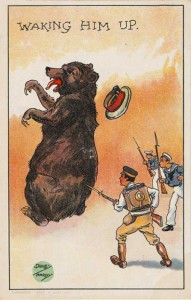 It is quite an interesting book, and one is left with a profound impression that the Japanese, only 45 years from being a feudal empire without firearms or modern machinery, had built a uniformly first-rate war machine from sheer stubborn discipline and hard work, and that the Russian Army had pockets of excellence in a vast peasant mass of mediocrity (or worse). Would that impression be changed if we read the reports from the attachés to the Russian forces? Probably not. The verdict of history is that the Russians botched the war; the verdict of the Russian people was that the Russians botched the war, and it led them into revolution; and the British are likely to have had more and better officers placed in better position with the Japanese, who were closely allied with Britain at the time. It seems unlikely that the Russians would have been quite as willing to open up to foreign observers as the Japanese Army did to their distinguished British visitors.
It is quite an interesting book, and one is left with a profound impression that the Japanese, only 45 years from being a feudal empire without firearms or modern machinery, had built a uniformly first-rate war machine from sheer stubborn discipline and hard work, and that the Russian Army had pockets of excellence in a vast peasant mass of mediocrity (or worse). Would that impression be changed if we read the reports from the attachés to the Russian forces? Probably not. The verdict of history is that the Russians botched the war; the verdict of the Russian people was that the Russians botched the war, and it led them into revolution; and the British are likely to have had more and better officers placed in better position with the Japanese, who were closely allied with Britain at the time. It seems unlikely that the Russians would have been quite as willing to open up to foreign observers as the Japanese Army did to their distinguished British visitors.
Massachusetts Bill Extends ‘May Issue’ to Hunting Rifles, Shotguns
 Massachusetts, the only state in New England wracked by increasing violent crime, is doubling down on its policy of extreme anti-gun laws. The most controversial policy proposed by State House Speaker Robert DeLeo is to add the state’s “May Issue” standard for handgun licenses, which is a de facto “No Issue” in many jurisdictions, to the requirements for the Firearms ID Card. The FID Card is required for long guns, air guns, and such non-firearms as pepper spray and model rocket engines.
Massachusetts, the only state in New England wracked by increasing violent crime, is doubling down on its policy of extreme anti-gun laws. The most controversial policy proposed by State House Speaker Robert DeLeo is to add the state’s “May Issue” standard for handgun licenses, which is a de facto “No Issue” in many jurisdictions, to the requirements for the Firearms ID Card. The FID Card is required for long guns, air guns, and such non-firearms as pepper spray and model rocket engines.
Massachusetts is one of eight states that require some sort of permit to purchase long guns, and one of only seven that register them (some states apply these laws only for “assault weapons”); if this provision passes, MA will be the only state that makes a routine long-gun permit subject to the whim of the issuing authority.
DeLeo, who recently came out ahead on a photo finish with a Federal grand jury that indicted a number of his friends, aides, supporters and family members in a jobs-for-cash scandal in the Probation Office, is unlikely to propose anything that is a threat to organized crime, to which he is at least well disposed, if not well connected.
It’s unlikely even an indictment would inconvenience DeLeo. In the one-party-state that is Massachusetts, the three previous Speakers of the State House are convicted felons, and the former Senate President was the brother of, and enabler for, serial killer, mob figure and pedophile Whitey Bulger.
The Bill’s Genesis: A Gun-Control Commission
The Speaker commissioned a Gun Violence Commission of anti-gun activists to propose new restrictions after the Sandy Hook shootings. Representatives included academic activists; politicians; a Soros-funded Harvard economist; a political and anti-gun Chief of Police whose very brief experience as a police officer was hassling open-container violators as a Brandeis U campus officer; a representative of the mentally ill; and a criminal defense attorney as a representative of criminal gangs. No pro-gun individuals were named to the commission, although some were interviewed on one day of the Commission’s nine-month effort, and another day was spent grilling FFLs.
The Commission expressed distress that the state had slid in the Brady Center’s ratings from 3rd to 6th most prohibitory state, and offered a variety of proposals to recapture previous heights. To give you an example of a point they thought they were reasonably compromising with gun owners on, they considered, but in the end did not adopt, a proposal that all guns must be stored at licensed ranges. They also backed down from requiring guns to be forfeit in cases of “a divorce, loss of employment or other personal crises,” but they urged this and the final bill proposes a study along these lines.
The Commission blames “lax laws in New Hampshire” for Boston gun crime. But those lax laws have not produced a similar crime wave in Maine or, for that matter, New Hampshire. They explain this by saying that those states are rural and therefore crime-free. MA does have a high population density at 840/mi compared to NH’s 147/mi. But Connecticut’s is 739/mi and Rhode Island’s is 1006/mi, and how do they fare in violent crime per capita?
So who are we going to believe, the Commission, or the lyin’ numbers? But remember, these people are real academics with degrees and everything (one of the principal authors is a gun control activist finishing her master’s. Oooh. She’s special!)
The DeLeo bill incorporates the recommendations of the gun control activists with only a few exceptions. The committee report can be found at Northeastern University.
Results of the Last Bill
The last major change in MA gun laws was 1998, passed over the veto of Governor Romney. That law, Section 180, has had one result that its promoters boasted in ’98: MA has the most gun-hostile legal environment in the Northeast, and arguably the nation. The rest of its results, though, run contrary to what its promoters claimed was their objectives:
- Massachusetts has a much higher homicide rate than any other New England State.
- Massachusetts has about double the violent crime rate than other New England States, and a higher violent crime rate than New York.
- Gun Homicides have roughly doubled, in absolute terms. (The population of the state is stable to down).
(Note also, that gun homicides are about half of MA homicides annually).
- Gun Related Hospital Discharge Assaults have trebled.
- Gun Related Emergency Room Visits have trebled.
- Massachusetts’s gun suicide rate is stable since 1998, but non-gun suicides have soared.
- There is no effect on the rate of fatal gun accidents, which is almost immeasurably low.
Our Reading of the Bill
Language available here.
Under the new bill, private sales, which are already very difficult in Mass., are banned outright.
There is a remarkable ex post facto law requiring any person who was at any time after 1 Jan 94 a gun dealer, but is no longer, to transmit duplicate records to a state office and the BATF now or face a criminal fine.
Any dealers still sticking it out are responsible for the criminal and mental health records, if any, of every one of their employees.
The “Secretary of Public Safety” has new powers, advised by a “Gun Control Advisory Board” of volunteer (but paid, we think) gun-control activists. Those powers include not just the ability, but the requirement to issue an expanded ban list of “large capacity rifles, shotguns, firearms and feeding devices,” three times a year.
The secretary may amend the roster upon his own initiative or with the advice of the gun control advisory board or the attorney general. A person may petition the secretary to place a weapon on, or remove a weapon from, the roster, subject to the provisions of this section. A person who so petitions shall give the reasons why the roster should be so amended.
All crime guns must now be traced, and the Colonel (top banana) of the State Police must furnish an annual report on these traces to the press and to gun control activists in academia and nonprofit groups.
Under the new bill, every license holder (which will now include every .22 and shotgun owner) must list all weapons owned every time they interact with the licensing authorities. An error or omission is enough to send them for prison and “get their guns off the street.”
Failing to report theft or loss of a firearm is now permanent revocation of licenses, and a felony, and so is failing to report recovery of a previously lost firearm.
Mandatory minimum for some gun crimes is now 7 years. (This appears to apply to real violent crime, such as carjackings and armed robberies and burglaries. Unfortunately even the current sentence is seldom applied because soft on crime prosecutors don’t charge this offense).
Home defense will now be illegal. Failing to store a firearm under lock and key, with ammunition under separate lock and key, is a felony.
Having a weapon stolen is sufficient proof that it wasn’t secured adequately, which is now a felony with a long prison sentence, depending on the magazine capacity of the weapon, up to 14 years.
BB guns, air rifles and Airsoft toys are redefined as “firearms” in an expansive new definition.
“Firearm” shall mean any pistol, revolver, rifle or smoothbore arm from which a shot, bullet or pellet can be discharged by whatever means.
There are some other interesting parts of the bill. There’s a section that appears to require school resource officers, but that also offers all school and public officials absolute immunity for any negligence, lapse or failure of school security.
There’s a requirement that hunter and firearms safety classes must now include an extraneous block of instruction on suicide prevention. Phone numbers for two suicide hotline must now be printed on the license to carry.
There appears to be a requirement that physicians collect gun ownership data from their patients, although it’s hard to understand because it’s written at DeLeo’s 6th Grade education level.
There is a requirement that even mental evaluation hospitalizations produce a lifetime firearms disability which may be lifted by a court if the individual petitions and a mental health professional pronounces him or her cured — but that the court may not, at its sole discretion.
There’s a lot of smoke and mirrors about people with firearms disability for mental illness or felonies having rights restored
If the circumstances regarding the person’s disqualifying condition and the person’s record and reputation are determined to be such that: (i) the person is not likely to act in a manner that is dangerous to public safety; and (ii) the granting of relief would not be contrary to the public interest.
What this is, is the exception for the “connected.”
Gun shops have to post suicide prevention posters. Because, everyone knows a suicide just needs a pithy phrase on a poster, and a worthless 800 number that brings a SWAT team to kill you, or at least trash your place.
What’s Next?
This bill is not law yet. It will go to the floor of the legislature, where the less anti-gun Western Mass. legislators and the more anti-gun Greater Boston legislators will both try to amend it. The anti-gun legislators have a pretty solid lock on the State House, so the bill may get worse before it passes. The governor will sign any anti-gun bill that’s brought before him.
When guns are outlawed, only outlaws will have garden shears
In this case, he did have garden shears, but they availed him not, as he apparently used them to attack a policeman in a case of suicide by cop. He’d been called in for a home invasion, and fled, with the cops in pursuit in what can only be described as a slow-speed foot chase.
A foul-mouthed local hood rat bimbo filmed parts of the confrontation. At about 1 minute she loses the action just as the guy rounds on Officer Friendly, who gives him four of the finest. “Trigger warning”: Not only does some complete waste of sperm and egg get himself shot, another complete waste of sperm and egg provides NSFW color commentary.
Then she starts screaming, abusing the cops. “Bleepdy-bleeps! Why didn’t you taser him? You bleeps!”
Well, at six seconds into the video you can hear them try to tase him, without effect.
Could they have taken a guy armed only with garden shears down? Yeah, but not without risk. He had plenty of opportunities to give himself up. He didn’t take ’em.
A local (if you call San Francisco “local” to Salinas, inland from Monterey) TV station has more details, including the name of the 44-year-old suspect, and information about the 911 call that said he was trying to break into a house, threatening to kill the people inside, and tried to choke the family’s dog (hmmm. Maybe he was a WeaponsMan.com reader?) The station also reported that of the two cops’ Tasers, one failed to fire and the other cop missed.
Lately, the Salinas cops have been ventilating folks who brandish poorly selected weapons. In March, they were muzzled by one Angel Francisco Ruiz. Post-mortem it turned out his gun was a non-firing replica. Earlier this month, another suspect pulled out a knife when the cops tried to cuff him; they wound up slabbing him instead.
Also sprach Darwin. See you in Hell, Carlos Mejia.
Maybe the next idjit who considers himself well-armed with a hedge-trimming tool will learn something from this, in which case the decedent’s life has served a purpose after all: bad example.
Hat tip: Bob at Bearing Arms.
Quoth McRaven: If you want to change the world…
Admiral William McRaven, who should need no introduction to this audience, spoke at the commencement ceremony for the University of Texas this year; he himself was a Longhorn and was commissioned from the NROTC program there in 1977, so, like us, he had the grim experience of the Carter era tempered by the positive experience of Vietnam-vet mentorship. He spoke to over 8,000 graduates (we knew they did things big in the Lone Star State, but we had no idea, given our history with a bunch of little colleges nobody famous ever came from).
Personally, we’ve seen him speak extemporaneously, and he’s more powerful and effective than he is with this prepared speech. It’s about 20 minutes long; we have his ten lessons from SEAL training for those who want to change the world after the video, but they’ll be kind of cryptic without the context in the speech.
- If you want to change the world, start off by making your bed.
- If you want to change the world, find someone to help you paddle.
- If you want to change the world, measure a person by the size of their heart, not the size of their flippers.
- If you want to change the world get over being a sugar cookie and keep moving forward.
- If you want to change the world, don’t be afraid of the circuses.
- If you want to change the world sometimes you have to slide down the obstacle head first.
- If you want to change the world, don’t back down from the sharks.
- If you want to change the world, you must be your very best in the darkest moment.
- If you want to change the world, start singing when you’re up to your neck in mud.
- If you want to change the world don’t ever ring the bell.
The freshly-graduated Longhorns seem bemused by some of these points.
(We’ve put this in the “SF History and Lore” category, because even though McRaven is a frogman, and their selection and training is just as specialized as their maritime missions and unique history, the essential take-away is the same simple, but hard commitment that will get you through SFAS/SFQC just like BUD/S: don’t quit).
Is this Bubba the Gunsmith’s Luger?
Is this a case of Bubba the Gunsmith devaluing a collector gun?
The ad says: LUGER, NUMBER 42, 9MM, DRESS/PARADE NICKEL, MATCHING #. Parts of that are true, and parts are not. Here’s the other side, and then we’ll comment a bit:
The true parts: It is a Luger; since it’s clearly a P.08, it’s almost certainly 9mm; it’s definitely nickel-plated; and it appears to be matching, serial number 7190.
The uncertain part: Code 42. We’ll take their word for it, but it also makes sense for a 1940 production Luger to be coded 42 (Mauser-Werke).
The false part: “Dress/Parade.” The Wehrmacht did have some dress bayonets that were plated, but (unlike US veterans organizations) they never inflicted that treatment on their firearms. Also, why would there be a “dress” version of a pistol that was carried in a holster? It makes as much sense as
Furthermore, if you look closely at the firearm, you can see that the finish is somewhat beat up with scratches and abrasions, but also is letting some rust come up:
It sure looks to us like plating overlaid over holster wear (on the side plate and takedown latch, for example) and possibly even pitting (on the slide under the serial number, but also along the barrel, if you look at the left-side picture blown up). Here’s another fishy-looking angle on the gun:
No German plated this gun, unless it was after he emigrated to the US and set himself up as a gunsmith. It looks like it might have been polished and plated perhaps to cover up a bad finish, extensive holster wear, or surface rust. Whoever did it, though, wasn’t Bubba, because the plating is generally well done and has held together for quite a long time. Crap plating is slapped on over the extant bluing, and flakes off in a couple of decades; quality plating is done in three layers, usually on bare metal, and is how the factories did it (albeit not the Mauser-Werke with military P.08s).
It’s also perhaps halved the value of the pistol, now.
So who did it? It was almost certainly done in the period from 1945-70 or thereabouts. Lugers were common pistols in regular commerce (TV shows and movies of that era often armed bad guys with Lugers and P.38s, even if the bad guys were, say, Russian). And nickel plating was the third most common gun finish at the time (after rust bluing and Parkerizing).
But in 1960, a Luger wasn’t anything special. It was just another used gun. It had a little bit of war-trophy cachet — we remember a guy who carried one as a young SF troop in Vietnam, because Luger, which you either get or you don’t. And, decades before stainless-steel firearms, the first of which stuttered haltingly into the market in the mid-70s, nickel was enormously more popular than it is now: the whole Smith and Colt catalogs, basically, could be had in blue or nickel, and nickel had a durability and cleaning edge.
A Luger was just another used gun. It’s hard for 21st century collectors to get their skulls around this idea, especially if they came late to the 20th (and soon, we will have a generation of collectors for whom the 20th century might as well be the 16th in terms of personal experience).
So some guy with a beater Luger took it to a smith he knew, or some Smith bought an el-cheapo, cosmetically-challenged Luger, and plated it up. And the new shiny Luger went on the shelf — maybe it had the bullshit “Dress/Parade” story already attached, a story impossible to check in those days where there was not only no Intertubes but also no 18-pound three-volume comprehensive Luger collector books — and it sold for more money than it would have done in its “original” condition, because better original condition Lugers were in every gun shop in the land. It was just another gun.
The Luger in these pictures, on a Florida gun site, has already sold. The asking price was $1,150, and maybe the guy got it, which is a lot less than the gun might have drawn in original worn condition.
But there is a silver lining in all this. We have all seen how collectors treat their most prized arms: spotless cleanliness, an OCD level of attention to temperature and humidity, handle with cotton gloves. There’s an awful lot of cherry-condition Lugers that will never fire another shot, and this P.08 isn’t one of them. Its buyer can shoot it to his heart’s content, and get the peculiar delight that comes from watching a toggle action eject spinning brass cases from behind the gun. Lugers are fun to shoot. Now, it’s a free country, and if you want to take rare Lugers and lock them up in a dark room, you’re welcome to do so. Knock yourself out. Meanwhile, we will buy the plated, reblued, numbers-mismatching or otherwise “polluted” guns that a collector disdains: and shoot the living daylights out of ’em.
After all, it’s a free country.

Kevin was a former Special Forces weapons man (MOS 18B, before the 18 series, 11B with Skill Qualification Indicator of S). His focus was on weapons: their history, effects and employment. He started WeaponsMan.com in 2011 and operated it until he passed away in 2017. His work is being preserved here at the request of his family.






